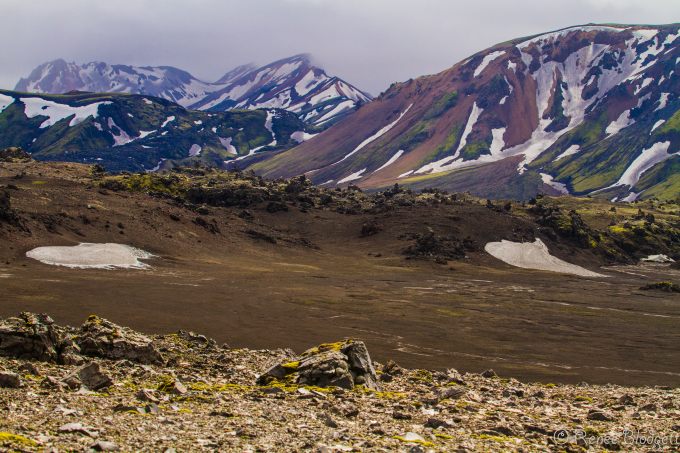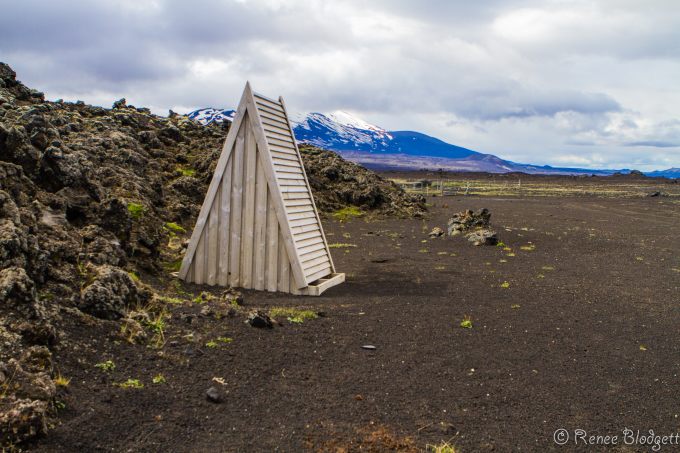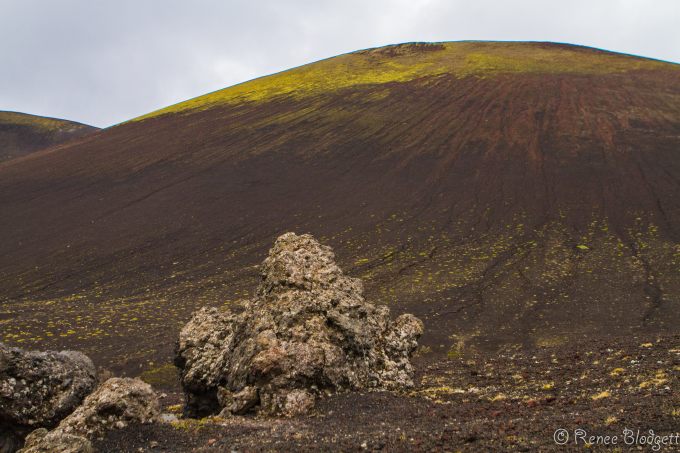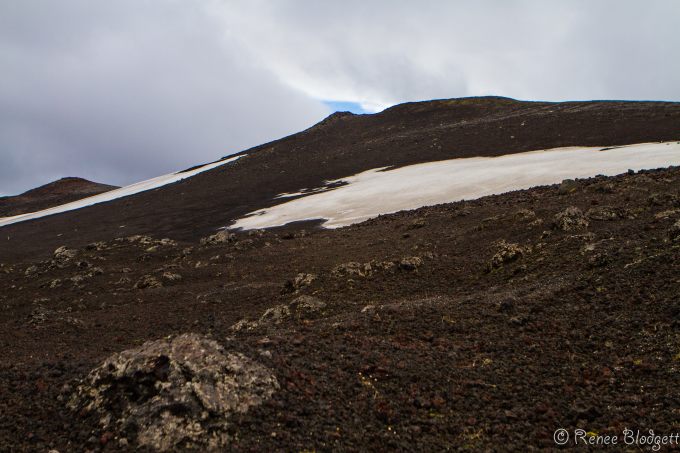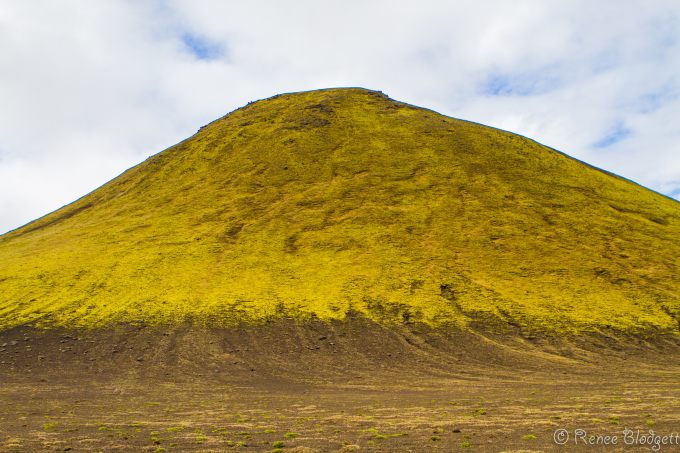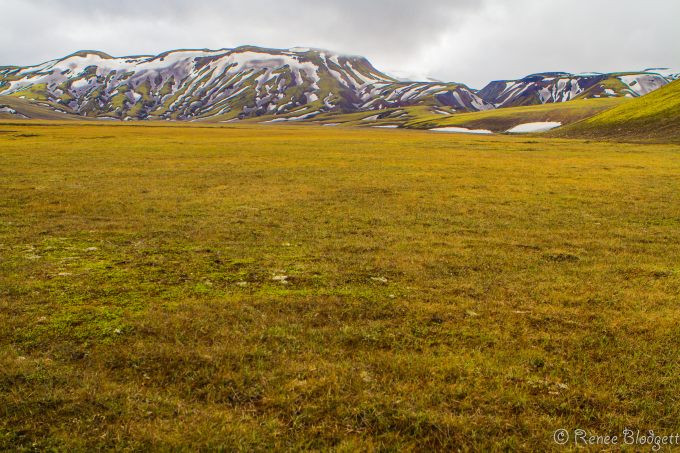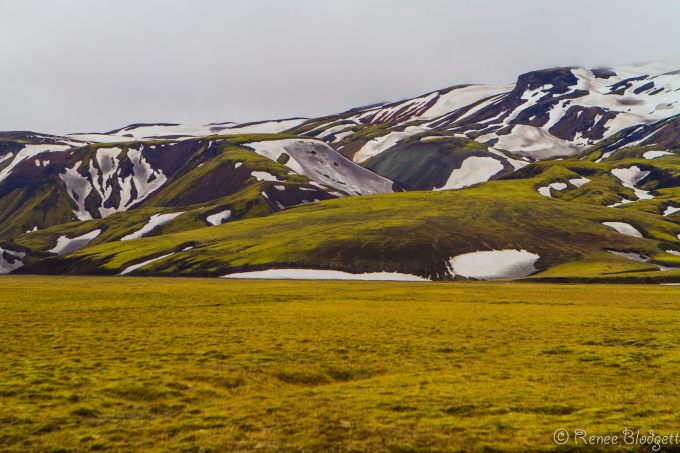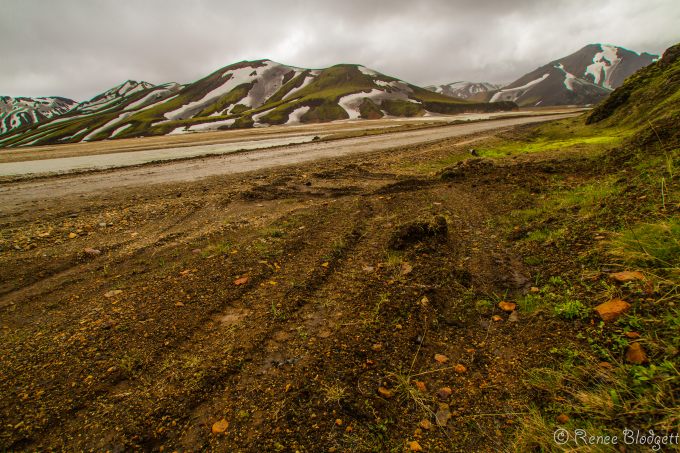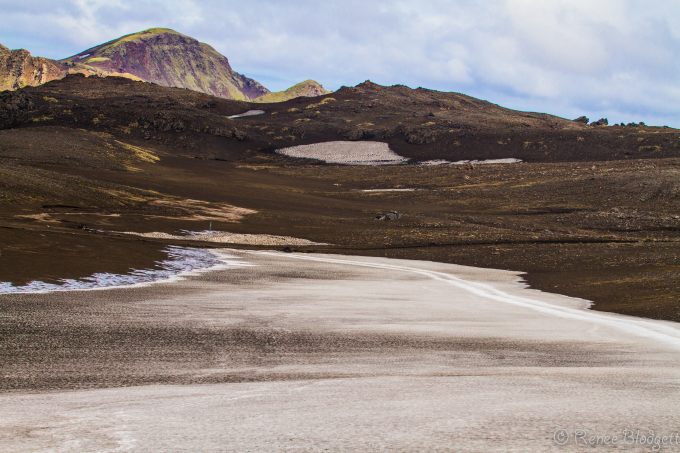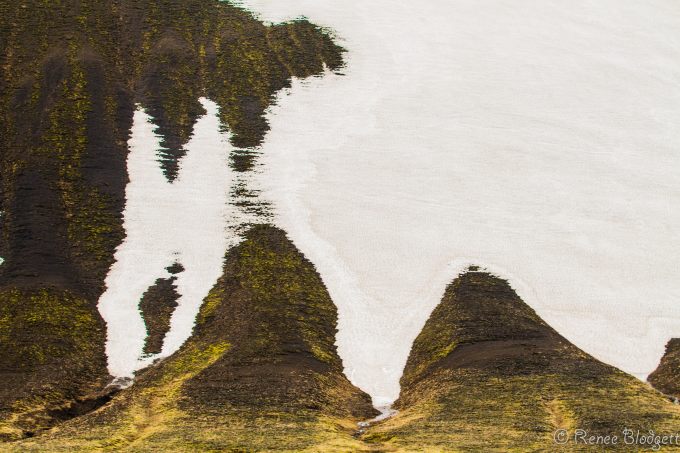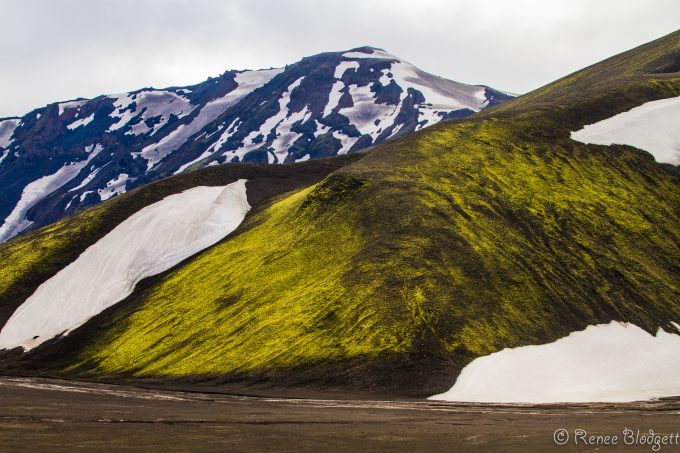Located in southern Iceland, Mt. Hekla is one of the most famous volcanoes in the world. An active volcano for centuries, the mountain ridge of Hekla is roughly 40 kilometers long and the fissure which splits the mountain ridge is about 5.5 kilometers long.
We visited Hekla during a tour through the south of Iceland in late June, learning about its life along the way. Over the past 7,000 years Hekla has had only five big fissure eruptions, the largest ones occuring 4,000 and 2,800 years ago. Traces of these two eruptions can be found in the soil in the North and the North-East of Iceland and it covers about 80% of the country. Traces of Hekla have also been found in Scandinavia and other parts of Europe.
Locals talk about Hekla quite a bit and she is well, let’s just say feared. It is thought that Hekla has had at least twenty eruptions since the settlement of Iceland and it has erupted five times in the 20th century, the last time in February 2000.The effects of the violent eruptions were disastrous at the time. The whole island was strown with volcanic ash, which, where they did not smother the grass outright, gave it a poisonous taint. The cattle that ate of it were attacked by a murrain, of which great numbers died. The ice and snow, which had gathered about the mountain for a long period of time, were wholly melted by the heat. Masses of pumice weighing nearly half a ton were thrown to a distance of between four and five miles.
Not far from Hekla, we visited a beautiful area known as The Fjallabak Nature Reserve. The Fjallabak region takes its name from the numerous wild and rugged mountains with deeply incised valleys, which are found there. The topography of the Torfajökull is a direct result of the region being the largest rhyolite (liparite) area in Iceland and the largest geothermal area (after Grímsvötn in Vatnajökul).
The bedrock of the Fjallabak Nature Reserve dates back 8-10 million years. At that time the area was on the Reykjanes – Langjökull ridge rift zone. Because of the cold climate in the Nature Reserve, the vegetation’s growing period is only about two months every year and the formation of soil is very slow.
Sandstorms, common in large parts of the area, as well as volcanic eruptions cover the Nature Reserve with lava and ash. Roughly 150 types of flowering plants, ferns and allies have been distinguished and least willow is common on dry sands and lava, and cotton grass in marshes. Lowland vegetation is found next to the geothermal area at Landmannalaugar with common sedge widespread and marsh cinquefoil in abundance.
The lakes in the Fjallabak Nature Reserve are cold mountain lakes and alongside plants, there are various small animals and trout to be found. Brown trout runs from Tungnaá River into Kýlingar and the lake Kirkjufellsvatn. Bird life is sparse as in other parts of the highlands. Snow buntings are the most common, and on lakes the great northern diver, whooper swans, and the red-necked phalarope can be seen. The harlequin duck is occasionally seen on Jökulgilskvísl river and has been known to nest in the area.
The road between Landmannalaugar and Eldgjá is only recommended for four-wheel-drive vehicles, because of the many unbridged rivers and possible quicksand. Today, the area is still grazed and 2,000 sheep graze in the Nature Reserve during summer months. Landmannahellir and Landmannalaugar are the main centres when the farmers collect their flock in the beginning of September.
The drive is incredibly beautiful and the land is luscious, full of mountains and sculptured by volcanoes and geothermal activity. The entire region is covered by lava, sand, rivers and lakes. Take a look and be prepared to be inspired.
For more on Iceland, check out Iceland section / Travel to Iceland / Traveling to Iceland. All photos Renee Blodgett.

Renee Blodgett is the founder of We Blog the World. The site combines the magic of an online culture and travel magazine with a global blog network and has contributors from every continent in the world. Having lived in 10 countries and explored over 90, she is an avid traveler, and a lover, observer and participant in cultural diversity. She is also the founder of the Magdalene Collection, a jewelry line dedicated to women’s unsung voices and stories, and the award-winning author of the bestselling book Magdalene’s Journey
She is founder of Blue Soul Media and co-founder of Blue Soul Earth as well as the producer and host of the award-winning Blue Soul CHATS podcast, that bridges science, technology and spirituality. Renee also founded Magic Sauce Media, a new media services consultancy focused on viral marketing, social media, branding, events and PR. For over 20 years, she has helped companies from 12 countries get traction in the market. Known for her global and organic approach to product and corporate launches, Renee practices what she pitches and as an active user of social media, she helps clients navigate digital waters from around the world. Renee has been blogging for over 16 years and regularly writes on her personal blog Down the Avenue, Huffington Post, BlogHer, We Blog the World and other sites. She was ranked #12 Social Media Influencer by Forbes Magazine and is listed as a new media influencer and game changer on various sites and books on the new media revolution. In 2013, she was listed as the 6th most influential woman in social media by Forbes Magazine on a Top 20 List.
Her passion for art, storytelling and photography led to the launch of Magic Sauce Photography, which is a visual extension of her writing, the result of which has led to producing six photo books: Galapagos Islands, London, South Africa, Rome, Urbanization and Ecuador.
Renee is also the co-founder of Traveling Geeks, an initiative that brings entrepreneurs, thought leaders, bloggers, creators, curators and influencers to other countries to share and learn from peers, governments, corporations, and the general public in order to educate, share, evaluate, and promote innovative technologies.

